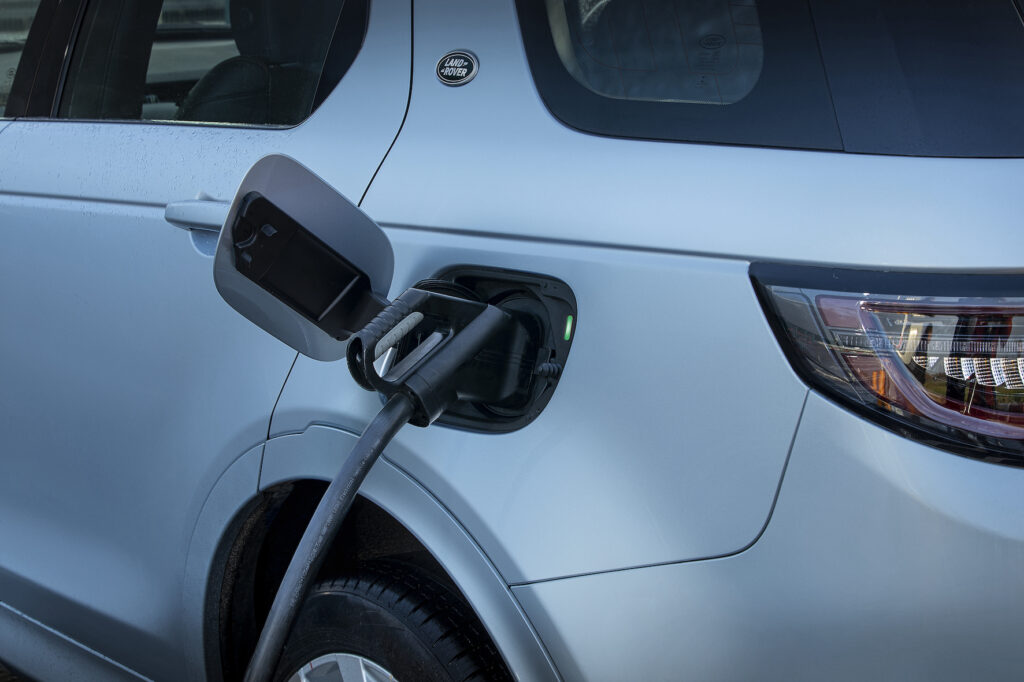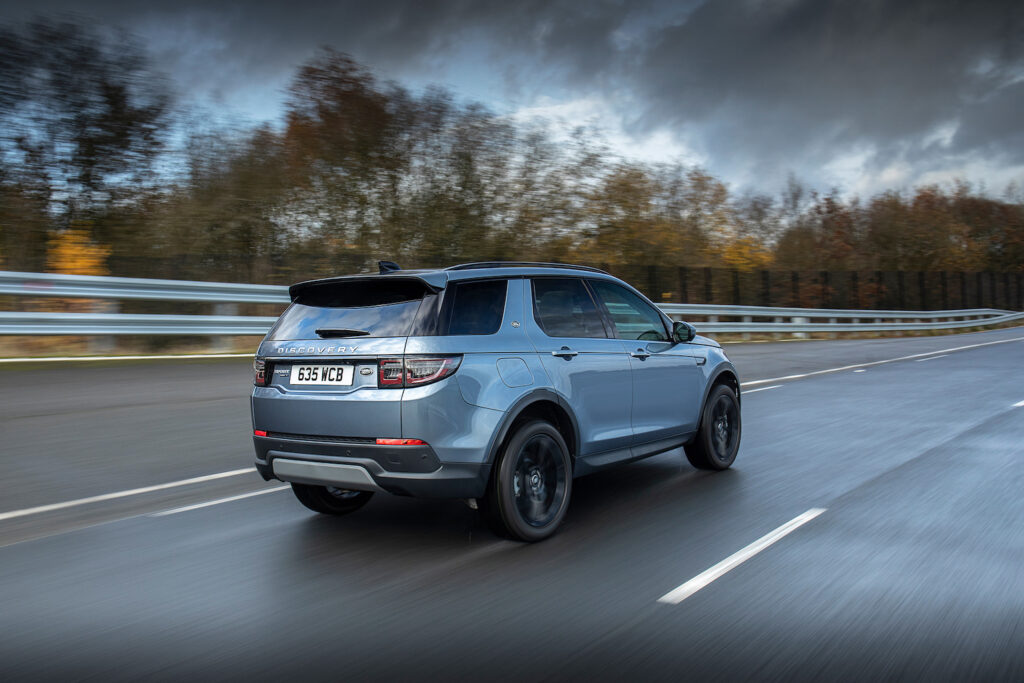Plug-in hybrid technology has now reached the Land Rover Discovery Sport range as the 4×4 manufacturer seeks to expand its range of electric models. With the plug-in hybrid versions of the Range Rover models already on sale and a plug-in Defender due to be introduced in 2021, this Discovery Sport and the Evoque P300e will complete the line-up. There is also a mild-hybrid version of the Discovery Sport available too.
Land Rover Discovery Sport PHEV – DESIGN

There’s little to tell this P300e plug-in hybrid version of the Discovery Sport apart from traditionally-powered stablemates. As with the Evoque P300e, there’s a second charging flap on the nearside rear wing with the petrol flat on the offside rear wing.
Again, as mentioned in our report on the Evoque, having the charging point on one side at the back of the car isn’t terribly convenient for charging (meaning you have to reverse up to a charging point), but we suspect owners will soon get used to that.
Land Rover Discovery Sport PHEV – POWER AND RANGE

Unsurprisingly, the Discovery Sport boasts the same mechanical and electrical set up as the Range Rover Evoque P300e. So that means a 1.5-litre turbo-petrol combined with a 15kW battery under the rear seats which produce the equivalent of 309bhp.
That power is delivered through an eight-speed automatic gearbox and four-wheel drive. Although electric power only goes to the rear wheels (there’s no mechanical link from the engine to the back wheels), even when the charge is low, you always have four-wheel drive with the engine charging the batteries.
Against the stopwatch, that gets the Discovery Sport P300e from 0 to 60mph in a sprightly 6.2 seconds and onto a 130mph top speed. With a full charge, Land Rover claims the P300e has a range of 38 miles with an official 143.3 average fuel economy.
Again like the Evoque, the Discovery Sport is unusual for a plug-in hybrid in that it can be charged via a three-pin domestic socket, a Type 2 cable or a rapid charger.
At a rapid charging point, Land Rover says that a charge from 0 to 80 per cent ar a rapid charging point will take 30 minutes, while on a domestic plug socket a full recharge takes six hours and 42 minutes. Longer than most PHEVs perhaps, but fine for an overnight charge.
Land Rover Discovery Sport PHEV – ON THE ROAD

On the road, the Discovery Sport feels lithe and light on its feet, but then that’s hardly surprising with 309bhp to play with. The power delivery is smooth and the engine and battery combination reacts well to the driver’s inputs, especially when you need a quick burst of acceleration such as pulling out of a junction.
The new eight speed automatic gearbox works well, providing smooth gearchanges and overall on-road refinement is also good, feeling a step up in terms of refinement compared to some of the standard engine models in the Discovery Sport range. As you’d expect too, the power delivery is especially smooth in EV mode.
There are three driving modes – Hybrid, EV and Save – the latter retaining the battery’s state of charge. We wouldn’t mind the ability to be able to adapt the level of brake energy regeneration as with other PHEVs on the market, as the standard level might not be strong enough for some tastes.
Land Rover Discovery Sport PHEV – INTERIOR

Our particular Discovery Sport test car, an R-Dynamic S, boasted a lovely interior with matt finish wood and a seersucker-style finish on the dashboard, a look that worked really well.
The front seats are comfortable and there’s good space for rear passengers for both head and legroom and the rear seats slide as well for extra flexibility for legroom or to expand the boot still further. As it is, the boot is a decent size anyway and there’s a big underfloor storage area although there’s not even a space saver spare wheel only a can of filler.
And talking of the boot, the downside to the P300e’s packaging is that this version can’t be had in seven-seater form as with the rest of the Discovery Sport range, which is frustrating for those after more eco-friendly family motoring.
The digital rear view mirror helpfully gives a wider and brighter view than the naked eye, but we found it too distracting and hard for your focus to adjust to when quickly glancing up. Thankfully though it can be switched over to a conventional mirror, which is preferable for everyday use.
Land Rover Discovery Sport PHEV – SUMMARY

The P300e plug-in hybrid version of the Discovery Sport is a good addition to the range, but it’s not without its drawbacks. A big appeal for many of the Sport are those temporary sixth and seventh boot-mounted seats, which aren’t available on the P300e and may be a deal breaker for some.
As may be the price. Starting at £47,000, the Discovery Sport P300e certainly isn’t cheap and you’ll need to be sure that its 38-mile electric only range is going to be used to its best effect. Those carrying out regular longer journeys or higher annual mileage are likely to be better suited to the diesel models on offer.
FACT BOX
Model: Land Rover Discovery Sport P300e Plug-In Hybrid
Price: from £47,000
Power: Petrol – 1.5-litre, turbo; Battery – 15kWh
Electric range: 38 miles
Average fuel consumption: 143.3mpg
CO2 emissions: 44g/km
Rating: 8/10

